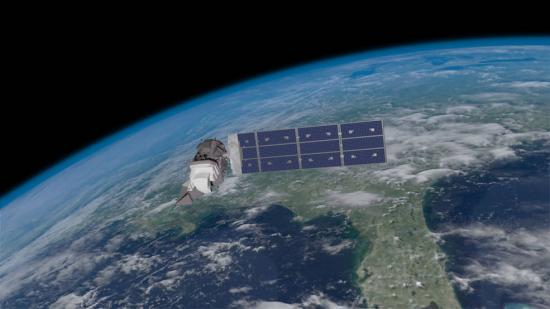Landsat’s Role in Supporting Urban Planning
Cities are places of light, action, complex social interactions, multi-faceted cultures, and fast-paced living. It’s no wonder cities are growing faster than rural areas. Earth experienced a milestone in the history of urban landscapes in 2008-09. More than 50 percent of the world’s human population now lives in areas of contiguous urban development. People are driving landscape-scale changes on our planet. Considering that people change the land surface, vegetation, water cycle, radiant heat, and other aspects of the landscape, the nature of this milestone has important implications for life. Using Landsat data, people can monitor urban change and also forecast patterns of change in future urban landscapes. Landsat sensors employ a spatial resolution of 30 m, an ideal scale for observing human impacts on the land. The sensors detect urban growth with visible and infrared reflectivity consistently, objectively, and dependably over time.

Modeling a Changing American Landscape
Land change is a signature activity of human civilization. Since the dawn of history, people have purposefully converted natural landscapes to human-dominated areas. Typical motivations for land change are cultivation (e.g. slash-and-burn fields, rice paddies, modern farms); occupation (villages, cities, housing developments); and other cultural and economic pursuits (roads, schools, airports).
Looking at Urban Expansion in Bahrain
Satellite images since 1987 show substantial environmental change on the island nation of Bahrain, including shifting vegetation patterns and more than a doubling in the extent of urbanization, according to a new analysis by the Geospatial Technologies and Human Rights Project of the American Association for the Advancement of Science (AAAS).

Landsat Images Provide the Gold Standard for New Earth Applications
Images from Landsat satellites provided free to the public by the Department of the Interior’s U.S. Geological Survey were the starting points for “a new breakthrough” reported today by Time and announced
What Doesn't Stay in Vegas? Sprawl
• The city of Las Vegas, Nevada has undergone a massive growth spurt. An image series, created in honor of Landsat 5’s twenty-eighth birthday, shows the city sprawling across the
Mapping and Measuring Urban Expansion to Inform Policy
• While urban expansion in Europe and America has been stymied by the recent economic slowdown, the developing world’s cities have been gobbling up land. In cities with more than
Landsat and the “Human Invader”
• In an article titled “Modeling the human invader in the United States,” USGS scientists Thomas Stohlgren, Catherine Jarnevich, and Chandra Giri modeled humans as an “invasive species” as they


